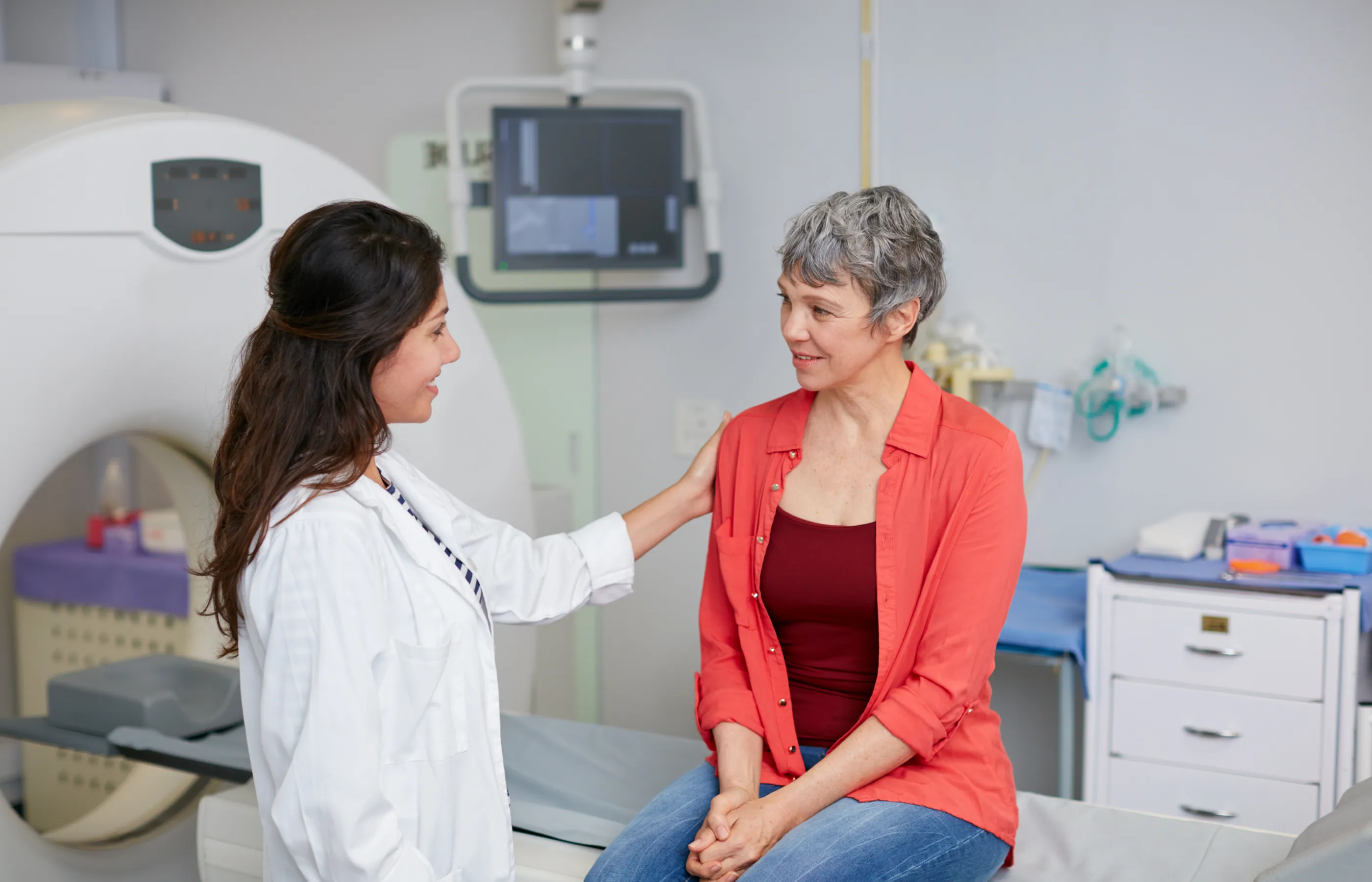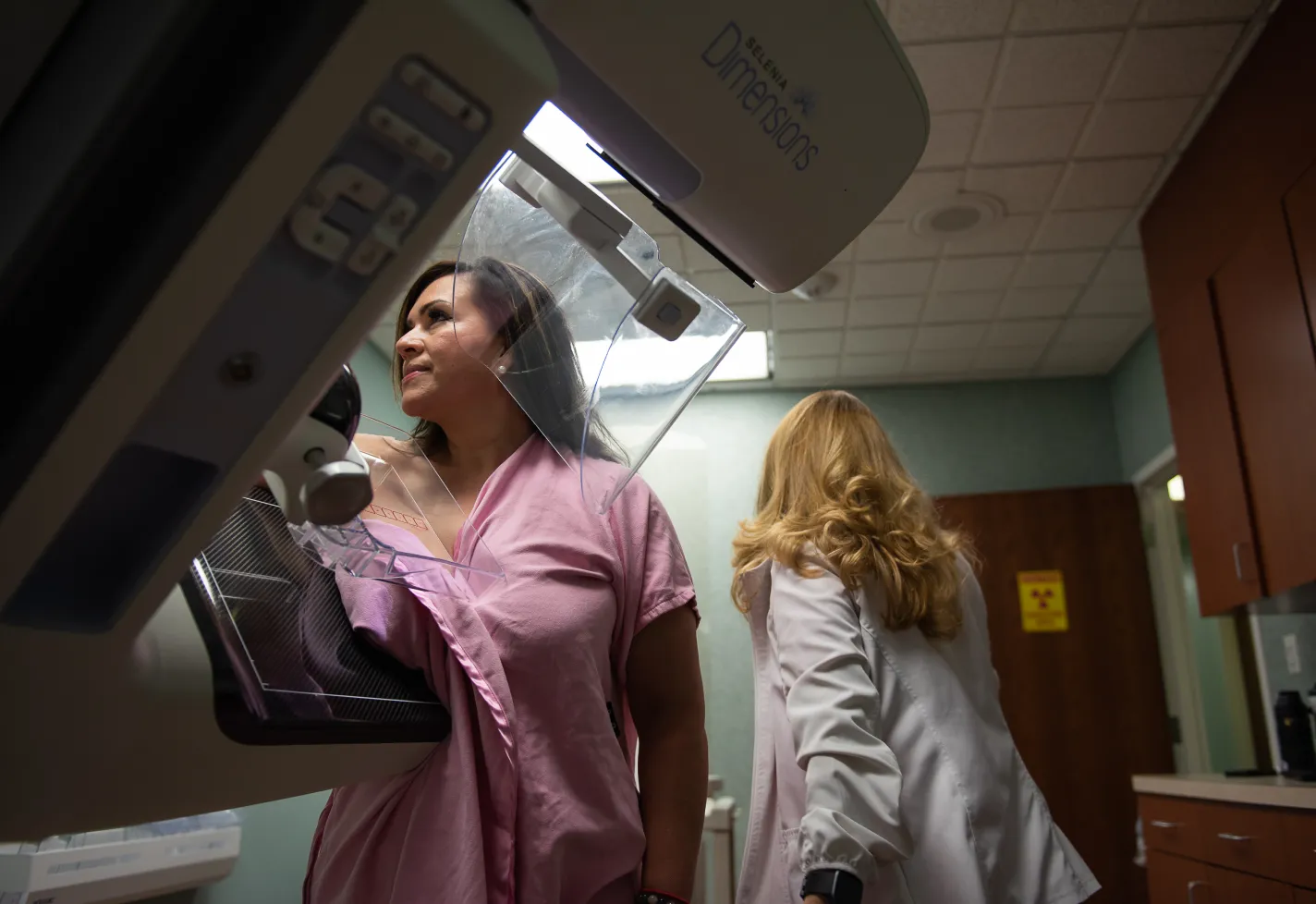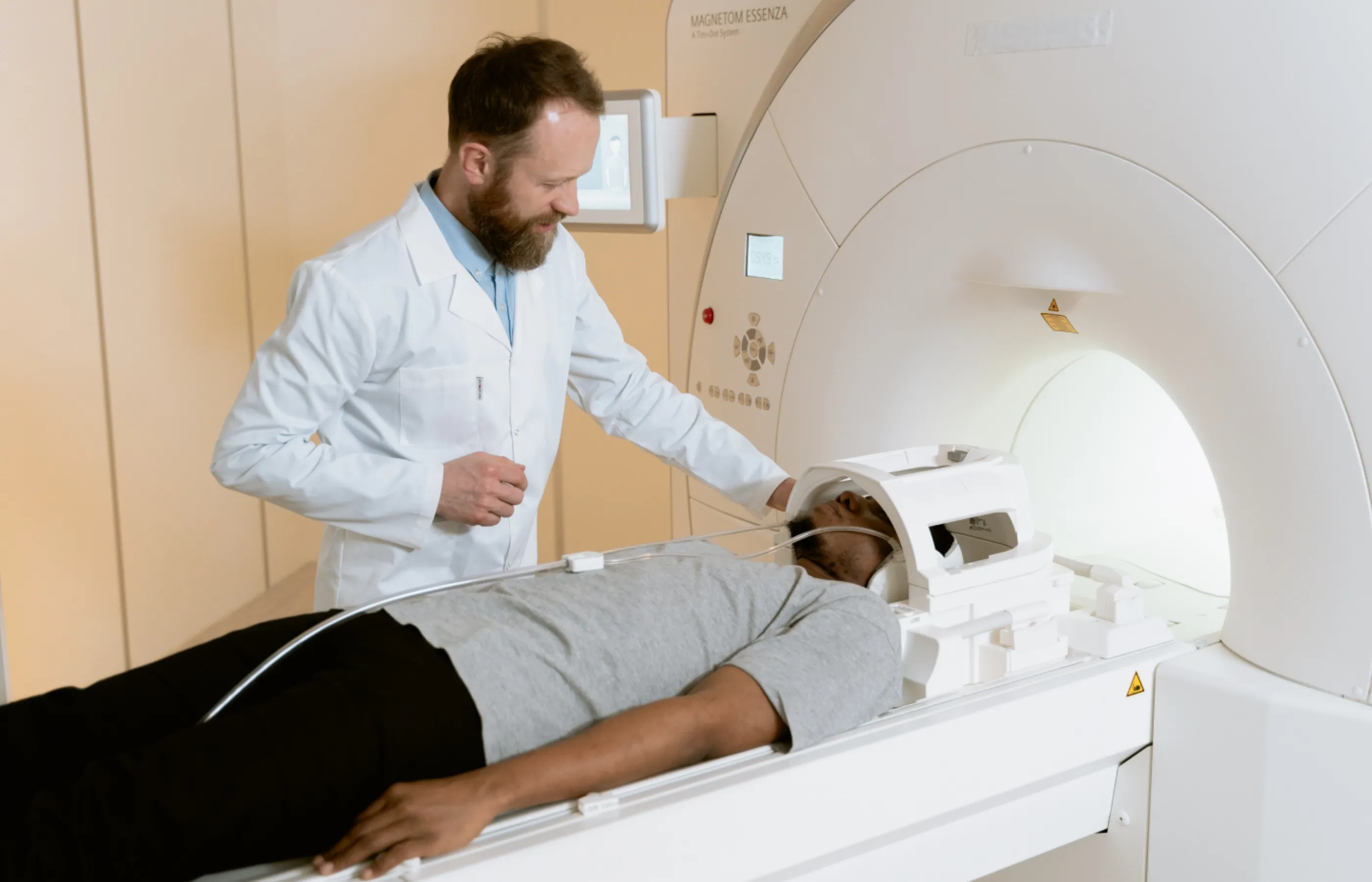MRI
Expert magnetic resonance imaging, compassionately delivered
Magnetic resonance imaging (MRI) takes detailed medical images of the inside of your body using strong magnetic fields and radio waves. This achieves enhanced, clear medical images from several angles — all without the need for radiation or surgical cuts. This makes MRIs both one of the most advanced and safest diagnostic imaging methods available.
While MRIs are very safe and low risk, you may not be able to have an MRI if you have any kind of metal implant, such as a pacemaker or artificial joint.
Schedule Your Imaging Appointment.
What MRI Is Used to Diagnose

MRI imaging gets an in-depth look at the health of a wide variety of areas inside your body, including:
- Bones, joints, and surrounding muscle
- Brain
- Breasts
- Heart and blood vessels
- Organs like your liver, uterus, or prostate gland
- Spine
Your care team can use your MRI scans to diagnose conditions or see how well treatment has been working for an existing condition. From there, they can adapt your treatment plan to better meet your needs.
Specialty MRIs
For Your Safety

It's possible you may be given a contrast solution for this exam. This helps make your images as clear as possible. If a contrast solution is needed, it's possible you may:
- Be given the solution through an injection or intravenous line (IV)
- Need to adjust your eating and drinking habits before the exam
- Have some mild side effects
When contrast is needed, it's possible the scan could have more risk for certain people. Make sure your care team knows:
- If you have any allergies at all, especially to iodine or contrast solution
- Your long-term and recent medical history
- Any medications or supplements you take
Allergic reactions are extremely rare. If you do have a reaction, our expert providers are trained to provide the help you need.

Your Well-Being Is Our Priority.
If you have any anxiety about your imaging procedure, reach out to your care team. Novant Health's experienced providers are ready to listen and help put you at ease.
Find Imaging Centers Near You.
The care team referring you for imaging may help you set up your appointment at a particular location. You can also choose to schedule your imaging appointment at the imaging center most convenient to you. Visit individual imaging center websites to learn which specific types of imaging are offered or to schedule at that location.
The Importance of Mammograms
Getting a mammogram is one of the easiest, yet most important, steps you can take to protect your breast health. Did you know you can schedule your routine screening mammogram online in minutes, without a referral from your doctor?
Use the following links to view locations near you and choose a convenient date and time for your mammogram. (Patients in the Wilmington area can conveniently schedule using MyChart.) Many locations offer extended hours, making it easy for you to take control of your health.


Referring a Patient?
If you're a referring physician or healthcare professional, we can help you find the right specialist, programs and services for your patient.
